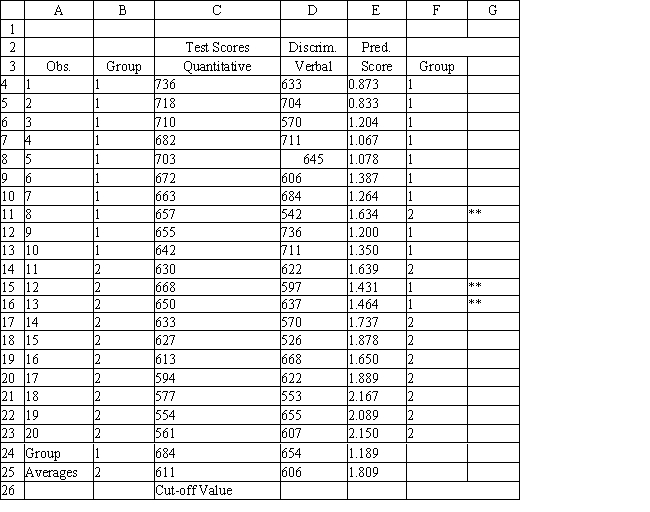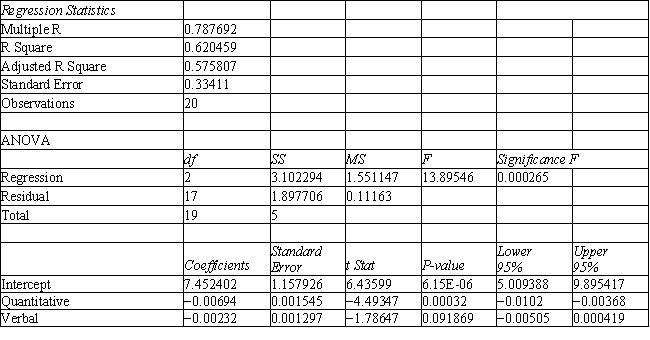Multiple Choice
Exhibit 10.1
The following questions are based on the problem description and the output below.
A college admissions officer wants to evaluate graduate school applicants based on their GMAT scores, verbal and quantitative. Students are classified as either successful or not-successful in their graduate studies. The officer has data on 20 current students, ten of whom are doing very well (Group 1) and ten who are not (Group 2) . 




-Refer to Exhibit 10.1. Suppose that for a given observation, the difference between Mahalanobis distances between group 1 and 2 (G1-G2) is big and negative. This means that
A) The observation is likely to be classified correctly to group 2
B) The observation is likely to be classified correctly to group 1
C) The observation is likely to be classified incorrectly to group 2
D) The observation is likely to be classified incorrectly to group 1
Correct Answer:

Verified
Correct Answer:
Verified
Q99: Suppose that a data set contains a
Q100: Exhibit 10.1<br>The following questions are based on
Q101: Standardization of a variable<br>A) removes the scale
Q102: Neural networks technique attempts to learn<br>A) what
Q103: Mahalanobis distance is a measure of<br>A) a
Q105: To create the training and validation data
Q106: Technique(s) used in classification step of data
Q107: The Mahalanobis distance measure accounts for differences
Q108: In the _ step of data mining,
Q109: One element in cleaning the data set